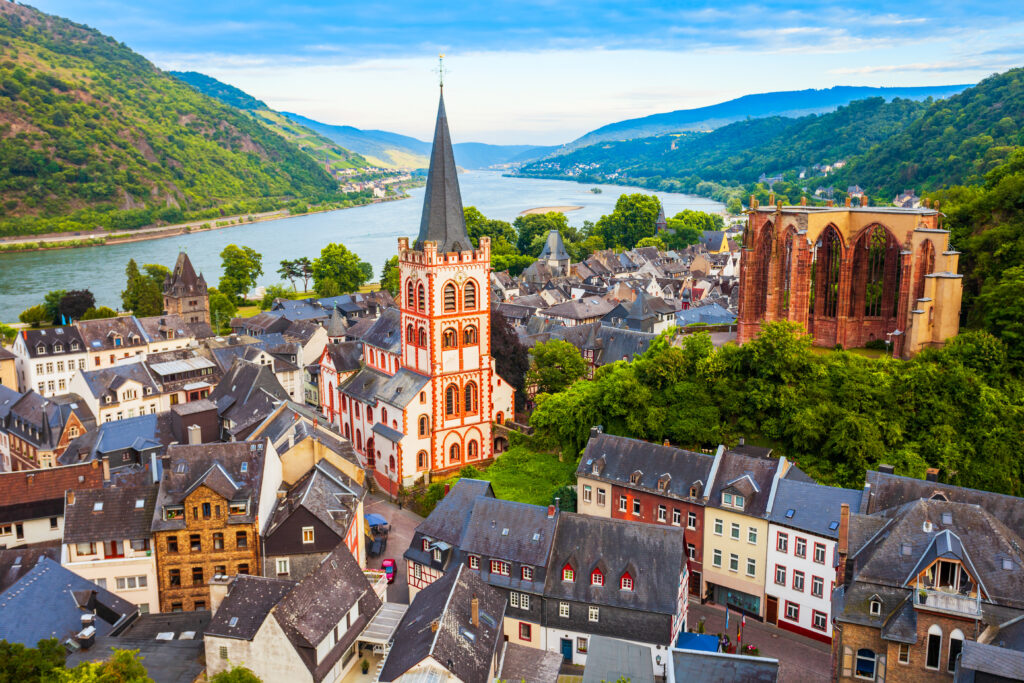
A country of immense contrasts,Germany is a land of incredible wealth. Its heritage, nature, culture, crafts and industry make it one of the most influential countries in Europe and the world. Steeped in centuries-old traditions, but also fervently modern, Germany, at the crossroads of East and West, is the hub of the European continent. A land of free, charismatic and dynamic cities, it is criss-crossed by superb rivers, covered by hills, mountains, agricultural plains and immense forests. With its marvellous castles and ancient churches, history is everywhere. Small towns and villages seduce with their rich half-timbered houses, Baroque or Art Nouveau facades, stone or red brick, Romanesque or Gothic churches... Here's a closer look at the must-sees on the other side of the Rhine.
1. Berlin Museum Island
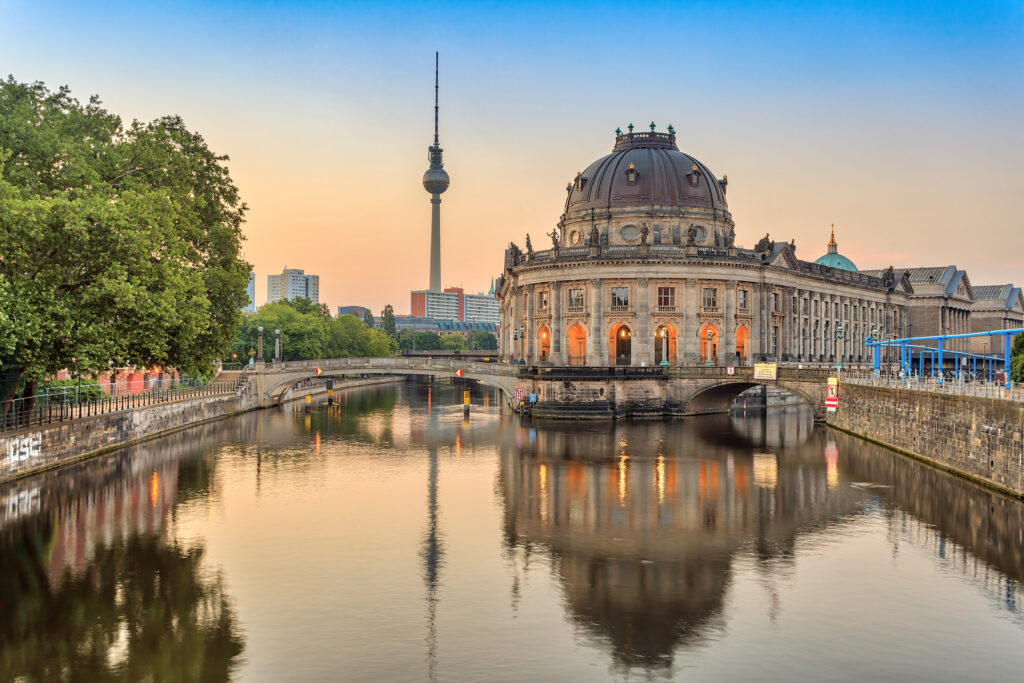
The Museum Island (Museuminsel), now a UNESCO World Heritage Site, boasts the highest concentration of museums in Europe. Since the royal decree of 1841, this small island in the center of Mitte, between Unter Den Linden to the west and Alexanderplatz to the east, has been devoted exclusively to art. Numerous paintings, sculptures and objects from prehistory to modern times are on display: the bust of Nefertiti, the reconstruction of the gateway to Babylon, mummies and sarcophagi, works by Monet, Manet and Cézanne, and Donatello's Pazzi Madonna. In December 2020, the opening of the Humboldt Forum, south of the Lustgarten, completed this gigantic museum complex in Berlin, one of Europe's top 10 party cities.
2. The Black Forest
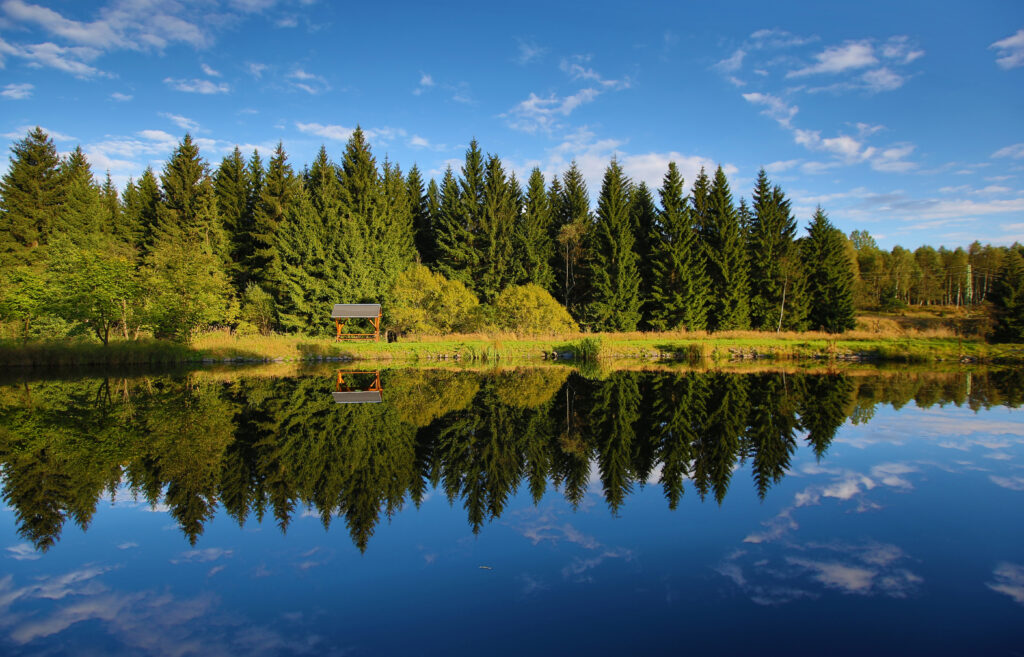
With its verdant valleys dotted with crystal-clear lakes, dark wild forests clinging to the mountains and bubbling waterfalls, the Black Forest is a nature-lover's paradise, embodying the very essence of romantic Germany. In autumn, this region, nestling on the banks of the Rhine on the borders of Alsace and Switzerland, is decked out in its finest finery, as its mountains are decked out in shimmering colors. In fact, it's one of Germany's top 10 motorhome road-trips. Boasting a rich culinary tradition, it's also a haven for haute cuisine, with more Michelin-starred restaurants than any other German region! From inns to renowned restaurants, from brasseries to wine-tasting cellars, a gourmet itinerary is available to hikers with delicate palates.
3. The Theresienwiese at Oktoberfest
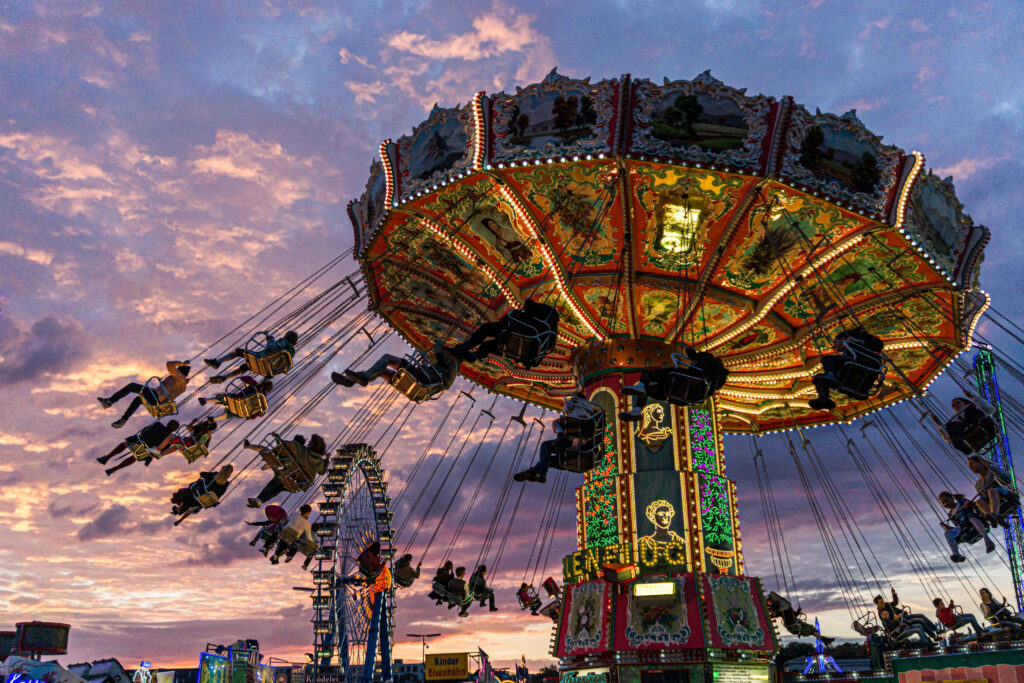
Munich's Theresienwiese is amust for beer lovers and non-beer drinkers alike. Every year, it becomes the rallying point for hop enthusiasts at the world-famous Oktoberfest. Every year, for two weeks between late September and early October, this huge esplanade is transformed into a beer theme park. In just a few days, numerous wooden huts spring up to house enormous breweries, where the atmosphere is always lively: the beer flows freely, while chickens and pigs' knuckles twirl around the tables to the rhythm of the waitresses, who nimbly stroll around so as not to drop anything. A great opportunity to visit Munich and its must-see districts.
4. What to do in Germany Neuschwanstein Castle
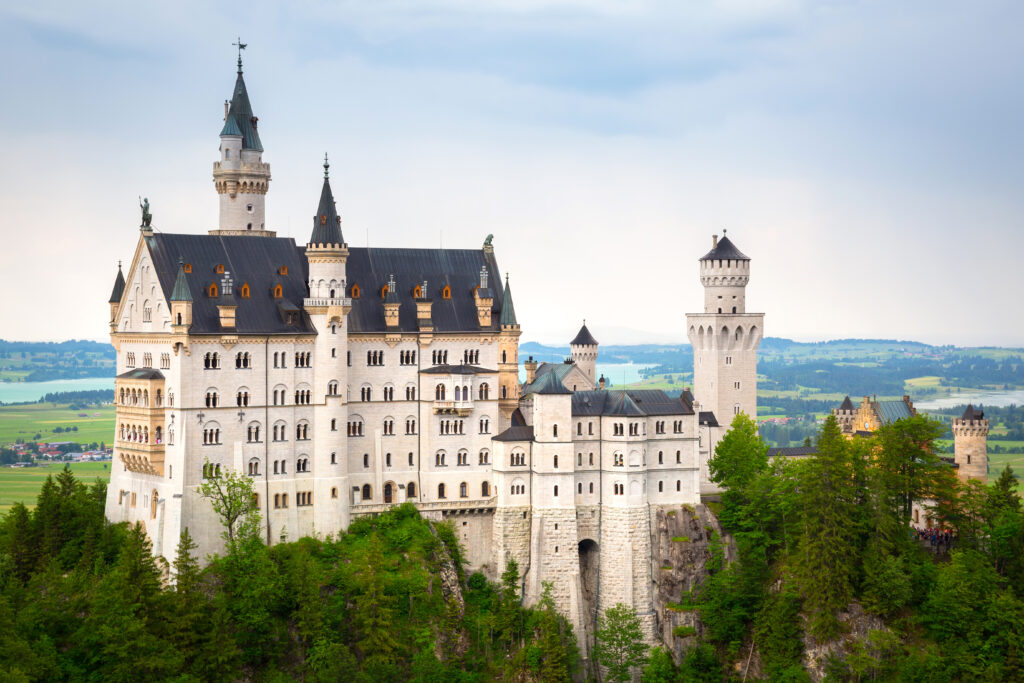
Distinctive from afar, Neuschwanstein Castle stands like a swan in dazzling white in the heart of the surrounding mountains, fascinating with its turrets and innovative style. One of the 10 most beautiful palaces and castles in the world, it's simply splendid! Built between 1869 and 1886, this castle was Ludwig II's extravagant project, where he sought to realize his most audacious dreams. He aspired to make it a sacred, inaccessible and protective place, a kind of earthly refuge. By 1886, the year of Ludwig II's death, only a third of the castle's rooms had been completed. Munich architects Dollmann and Riedel were commissioned to bring this somewhat extravagant dream to life. Neuschwanstein's plans were inspired by medieval fortresses, with a gateway, keep and royal dwelling among other features. Today, Neuschwanstein Castle is one of the most visited sites in Germany, attracting over 1.5 million tourists every year.
5. Heidelberg Castle
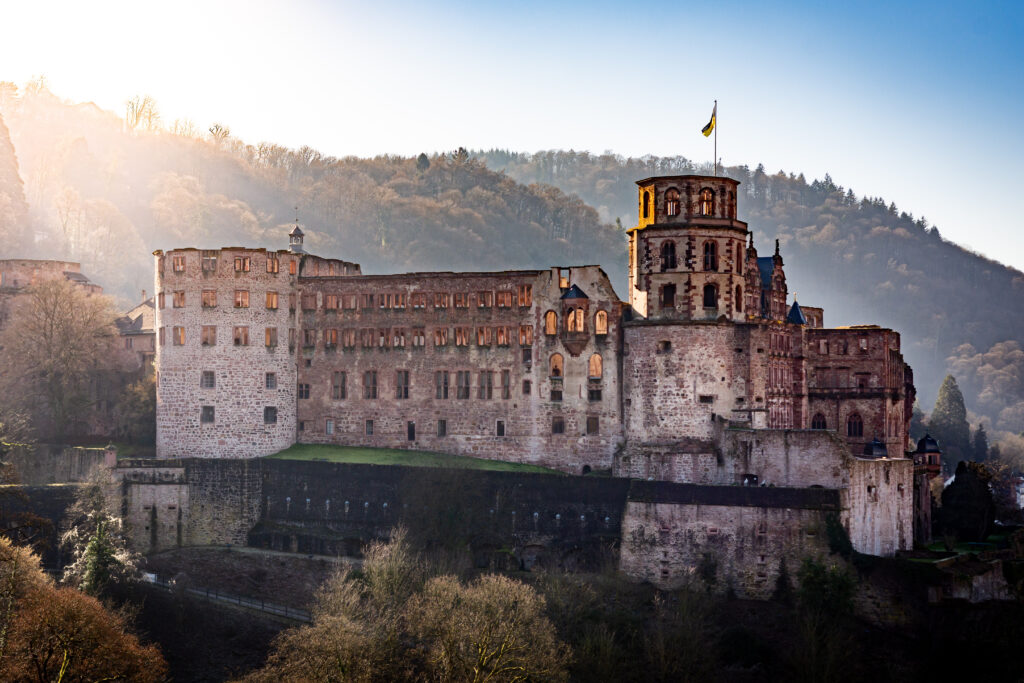
Suffice to say, these impressive ruins, surrounded by forests, are known the world over. The ensemble forms a remarkable composition, both eclectic and harmonious, also marked by the pink hue of the stone. The various styles of Heidelberg Castle reflect the phases of its construction. Only the facade remains of the old part, which dates back to the 14th century. The ruins allow us to imagine the former grandeur of this residence of the prince-electors palatine, destroyed by the French army in 1693. The vast castle is packed with countless treasures. Although largely in ruins, it is still possible to enter the castle grounds for a guided tour.
6. What to do in Germany See Cologne Cathedral
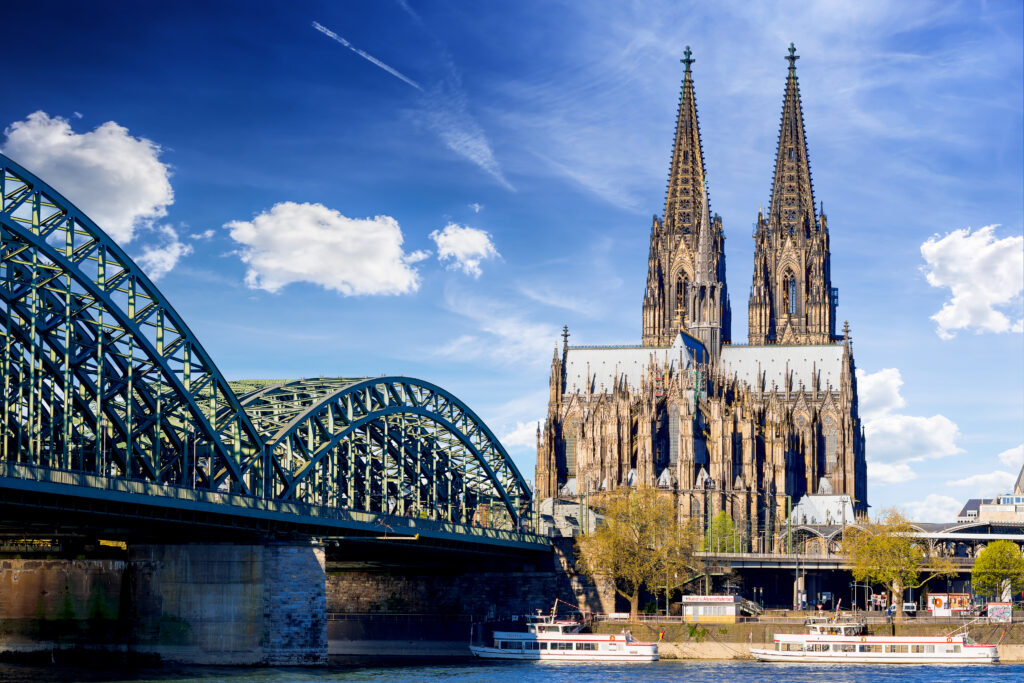
Visible from virtually every point in the city center and its outskirts, Cologne 's splendid cathedral rises majestically above the city's rooftops and chimneys. More than just a geographical landmark, it is also a source of pride for the people of Cologne. To this day, it remains the city's second-highest building, after the telecommunication tower. From the top of the south tower, some 100 metres up, a platform offers an impressive view. To enjoy the panoramic view of the city and the Rhine, however, you'll have to climb 533 steps. On a clear day, it's even possible to catch a glimpse of the Siebengebirge hills. While climbing the steps, visitors also pass by the bell. Of the cathedral's eight bells, St. Peter's is the largest church bell in the world.
7. Dresden
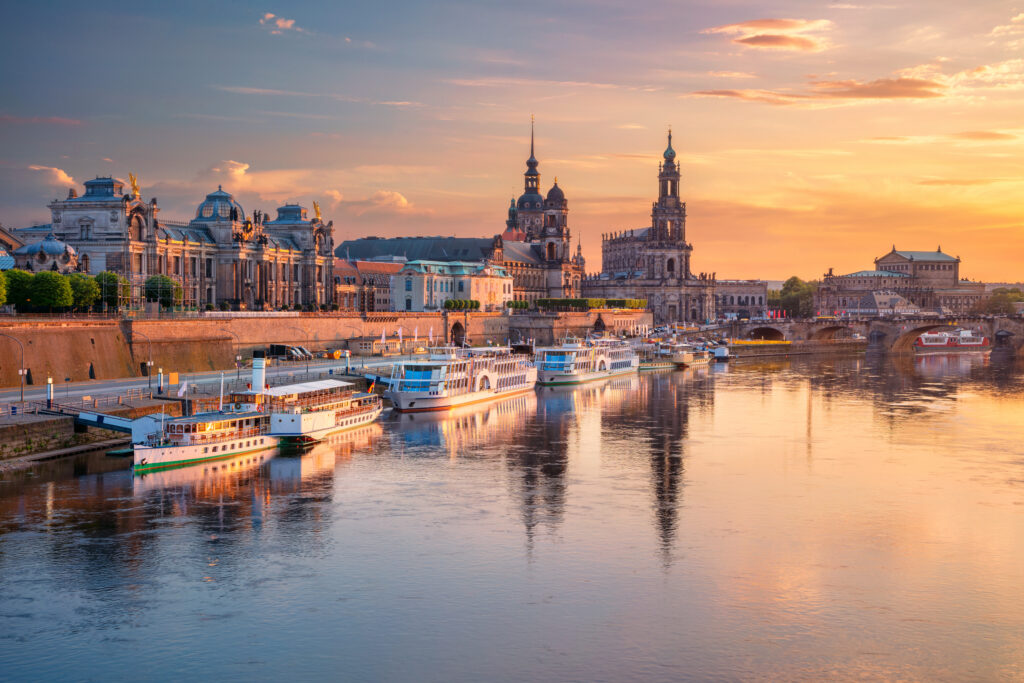
dresden, nicknamed the "Florence of the Elbe", is Saxony's top tourist destination, particularly popular with lovers of classical culture, and one of the best places to visit at Christmas. Its Baroque ensemble, built on the right bank of the Elbe by the Electors of Saxony and Kings of Poland, is unique in the world. Dresden's museums, often founded by the enlightened Saxon prince-electors, house priceless treasures, forming one of the most impressive collections in Germany. The other side of the Elbe, the Neustadt, has a different face: it's a young, avant-garde district influenced by the alternative movements of the 1990s. A must for tourists to eastern Germany, Dresden offers a window on the "post-GDR" era, and is also the starting point for visits to the picturesque Saxon landscape, Saxon Switzerland, Moritzburg Castle and the medieval town of Meissen.
8. What to do in Germany Visit Hamburg
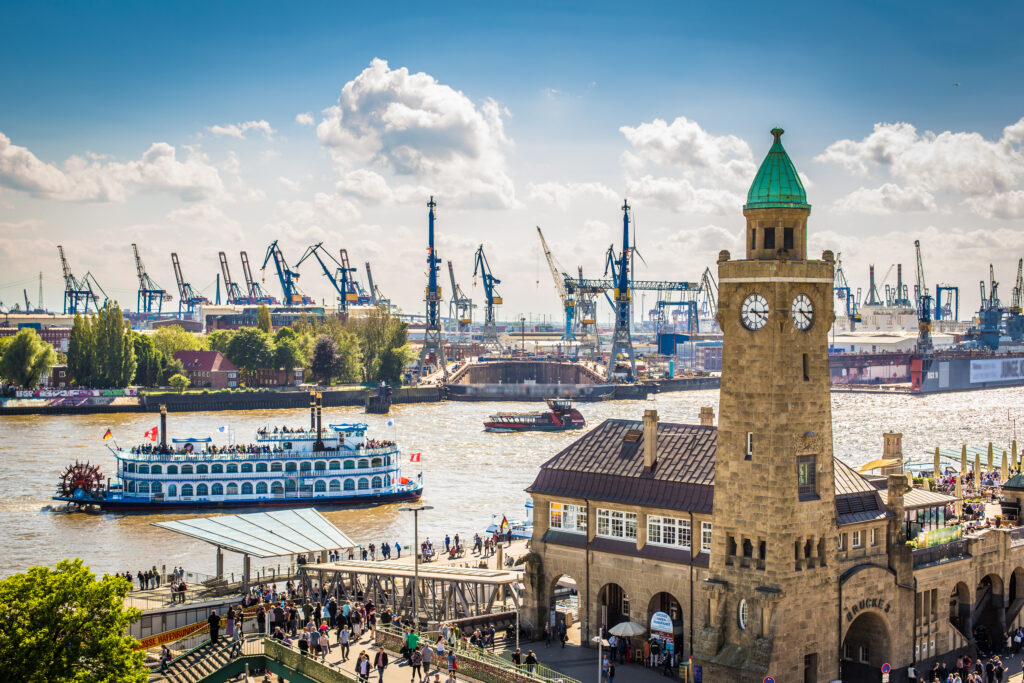
As the capital of northern Germany,Hamburg is a thriving, dynamic metropolis with close ties to the North Sea. From port activities to the alternative neighborhoods of Sankt-Pauli and the elegant quarters of bourgeois villas, it's a very diverse city. Although the old town suffered from the bombardments of the Second World War, Hamburg remains culturally rich, with preserved architectural treasures, charming alleyways and top-quality museums. With its dynamic nightlife, art scene and varied activities, Hamburg is characterized by a cosmopolitanism that is rare in Germany. And it was here that Hamburg-born Johannes Brahms found his inspiration, thanks to the special northern light that illuminates the city.
9. Freiburg
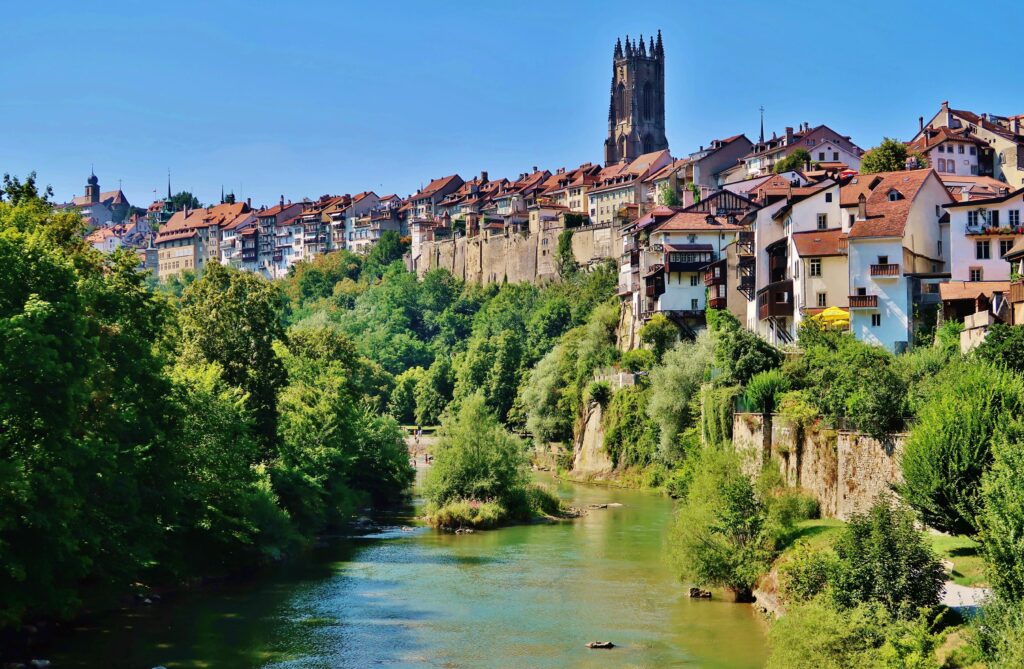
Close to the French and Swiss borders, Freiburg is a charming Black Forest town with a lively student atmosphere. Its center, with its cobbled pedestrian streets and Bächle (small gutters running through the streets, originally designed as troughs for animals), is truly picturesque. A walk on the Schlossberg, a wooded hill that welcomes joggers, artists and walkers, offers spectacular views of the city of Baden. Freiburg is particularly attractive to tourists, and it's probably here that you'll come across the most French people, as the neighboring Alsatians often enjoy spending their weekends here. What's more, Freiburg is one of the German cities with the most days of sunshine per year. An ideal getaway!
10. Lake Constance
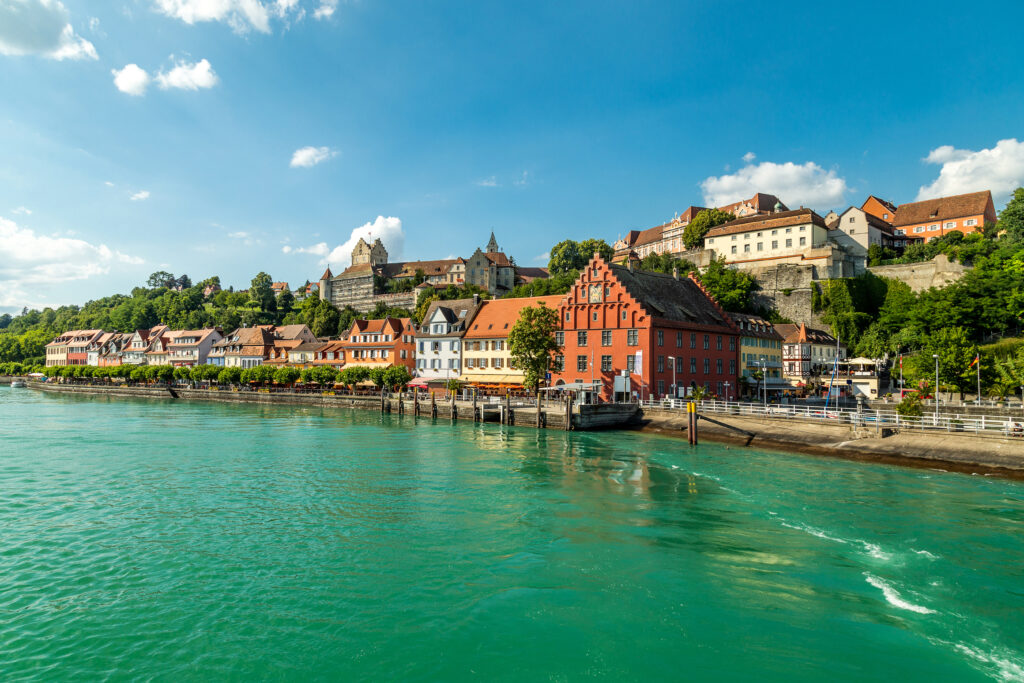
On foot, on horseback, by sailboat, swimming, bicycle, zeppelin... In fine weather on the shores of Lake Constance, on the Swiss-German border, there's no shortage of outdoor activities. You can choose between swimming on the lake, cruising, canoeing or simply pedal-boating. You can also enjoy a bike ride along the Bodensee cycle path. It's 273 km long and takes you through historic towns. There are also a number of small beaches where you can go for a swim. On the shores of the lake, Constance is a quiet and charming university town, where visitors will be enchanted by the beauty of the surroundings. While the lakefront is ideal for strolling, the city center captivates with the medieval beauty of its winding streets, and there are many cultural and sporting activities on offer.
11. What to do in Germany Stroll through Rothenburg ob der Tauber
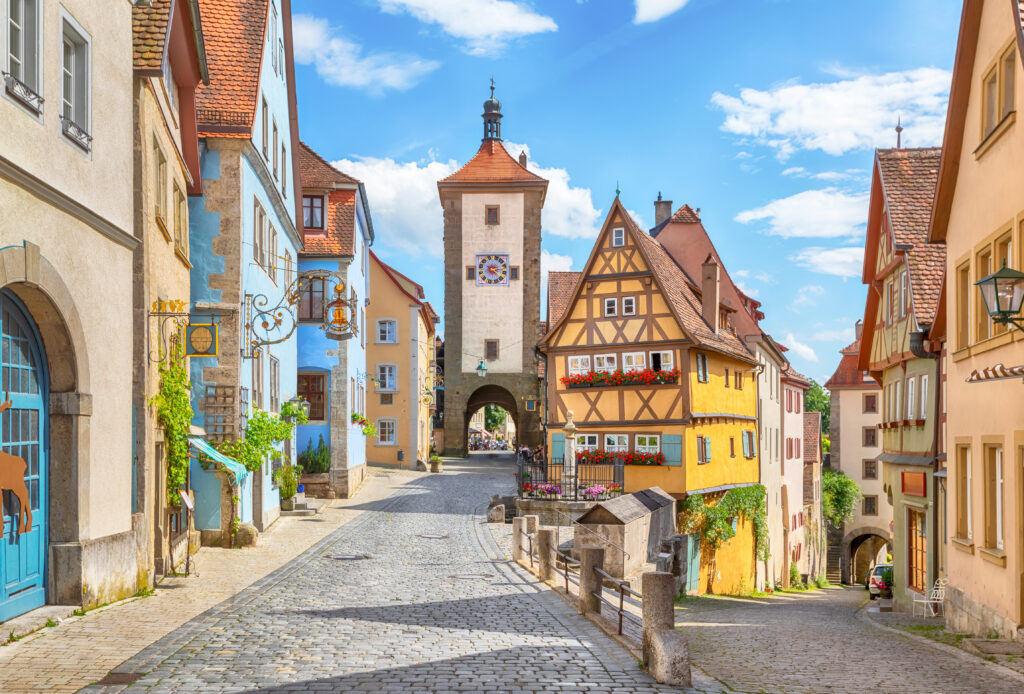
With its exceptionally well-preserved medieval architecture, Rothenburg ob der Tauber is undeniably one of Bavaria's most charming small towns, and one of the best destinations to visit from February onwards- some would even say in Germany. Every year, it attracts over 2 million visitors! The old town, with its many half-timbered houses and stone mansions dating back to the Middle Ages, has kept its ramparts and 42 defensive towers completely intact. The facades, meticulously restored in bright colors, give the town the look of a small, elegant urban museum. The city offers visitors a real plunge into the past... You'd think you were back in the Middle Ages! The streets of Rothenburg have been the backdrop for numerous historical films, some of which have now been forgotten. Rothenburg, for example, was the inspiration for Walt Disney's animated classic Pinocchio.
12. Sanssouci Castle, Potsdam
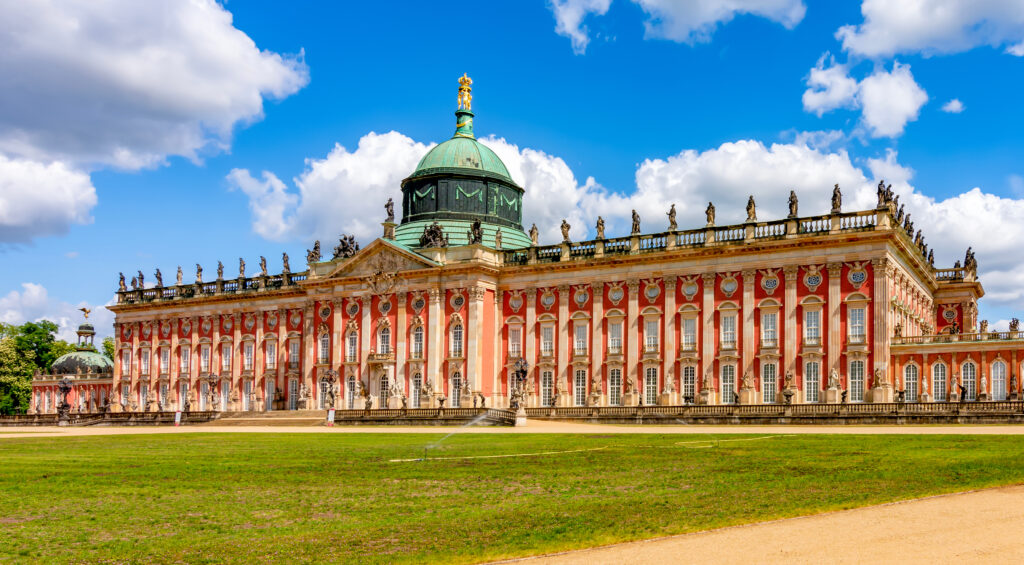
Perched atop a magnificent terraced garden, King Frederick II's little castle is a prototype of the rococo "Frederician" style. Built between 1745 and 1747 by architect Georg Wenseslaus von Knobelsdorff, Château de Sanssouci takes its name from the king's Francophilia (French was the official language of the Prussian court in the 18th century) and his carefree state of mind. Many prestigious guests, including Voltaire, frequented the château. Voltaire took charge of the library and wrote some of his most important works, before falling out forever with his patron. The interior, which is well worth a visit, includes must-see rooms such as the concert hall, the marble room where philosophical debates were held, the library and the workroom. Nearby, the tomb of King Frederick II is surprisingly simple, with a slab bearing only the inscription "Friedrich der Große".
13. Berlin's Brandenburg Gate
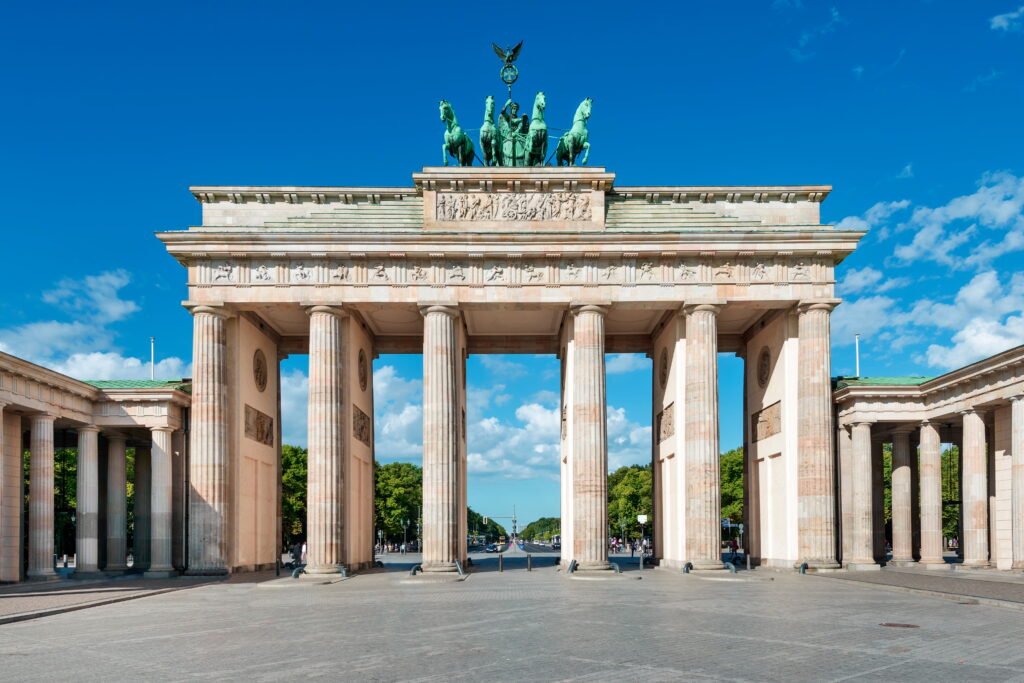
The Brandenburg Gate is the last of Berlin' s 14 remaining gates. It is undoubtedly the city's most emblematic monument , and is one of our 19 must-see sights in Berlin. Erected between 1788 and 1791, it was inspired by the propylon of Athens, according to plans by architect Carl Langhans, as a tribute to King Friedrich Wilhelm II of Prussia. Crowned by a sculpture of the goddess of Victory, Niké, on a chariot drawn by four horses, a famous work by Schinkel, the Gate suffered extensive damage during the Second World War, but was restored in 1957. It symbolized the division between the two Germanies until 1989, with the Berlin Wall passing close by, and today stands as a symbol of reunification. Opposite the gate, beyond Pariser Platz, begins Unter den Linden, Berlin's most famous boulevard.
14. What to do in Germany Fresh air at Königssee lake
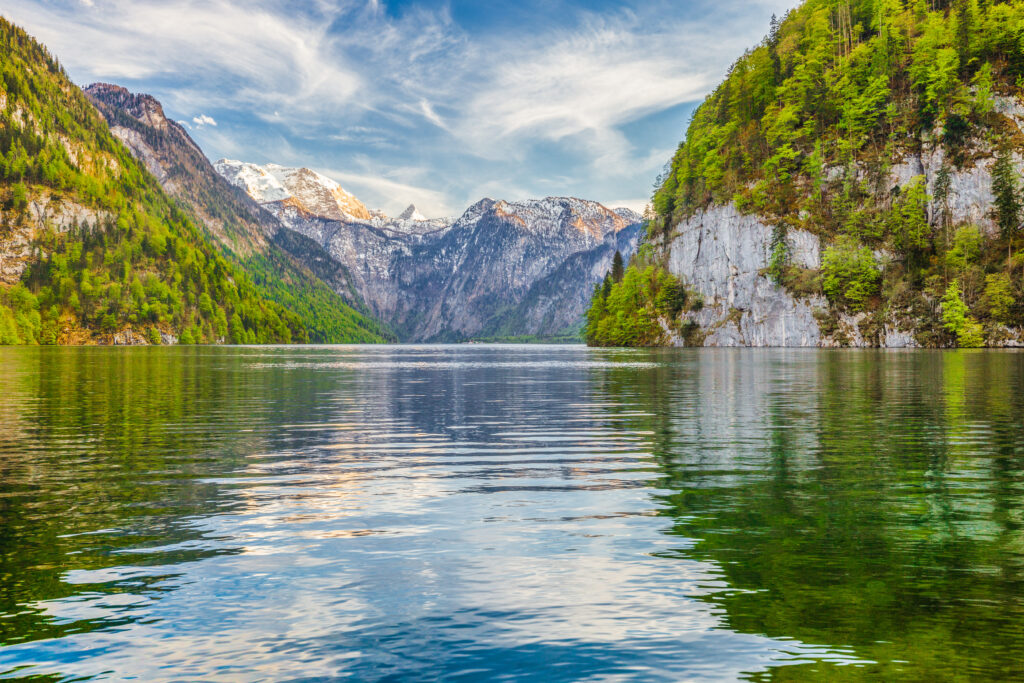
Lake Königssee is undeniably one of Germany's most impressive lakes, and one of our 15 must-sees in Bavaria. It combines all the elements needed to create an enchanting postcard landscape: emerald-green water, a mountainous belt (with the Watzmann peak on the horizon), a baroque bulbous church (Kirche St. Bartholomä), and even a waterfall! The escarpment around the lake prevents hikers from making the tour on foot, making it necessary to embark on a boat to explore its waters. You won't be alone on board, as the Königssee is one of the region's major tourist attractions.
15. The island of Rügen
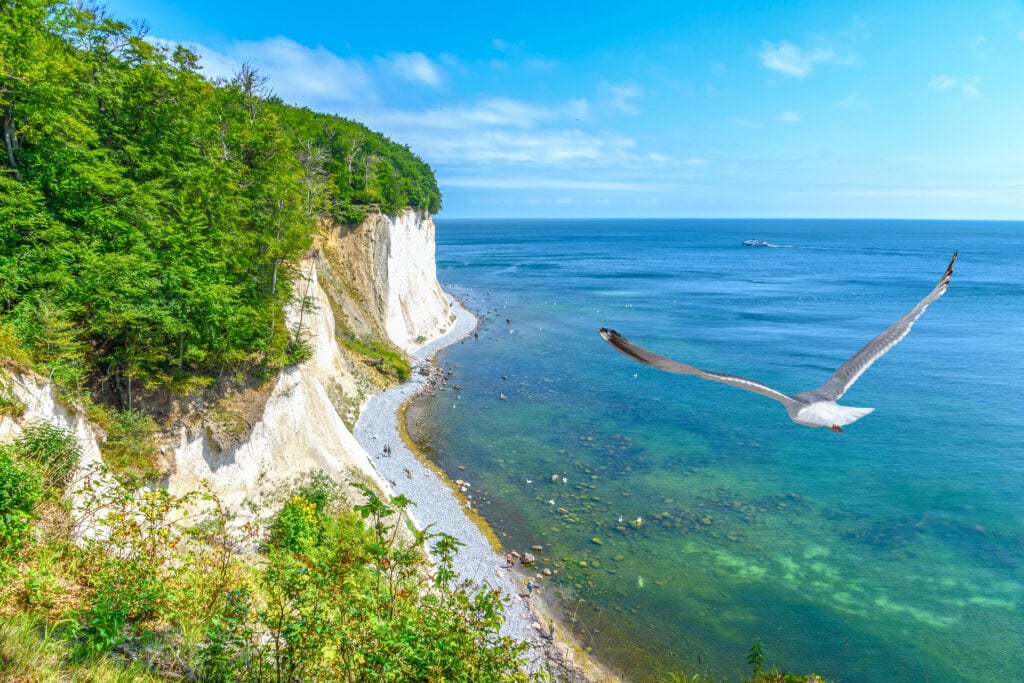
Crossing the Strelasund, the arm of the sea between Stralsund and Rügen, reveals a world that is at once remote, maritime and Nordic. With a surface area of 926 km², Rügen is the largest German island in the Baltic Sea and is reputed to be the most beautiful. It is distinguished by its white cliffs and wildly beautiful capes. At the heart of German Romantic culture, Rügen was the subject of Caspar David Friedrich's famous 19th-century paintings of the chalk cliffs. These chalk cliffs, known as the Stubbenkammer, are located in the northeast of the island, on the Jasmund peninsula in the eponymous national park. The main one, the Königsstuhl (Emperor's Chair), is the subject of one of Friedrich's most famous works. A visit to Rügen is therefore an opportunity to enjoy these grandiose landscapes while hiking. Since the fall of the Berlin Wall, the region has been attracting crowds of tourists, especially on summer weekends.
16. What to do in Germany Visit Bremen
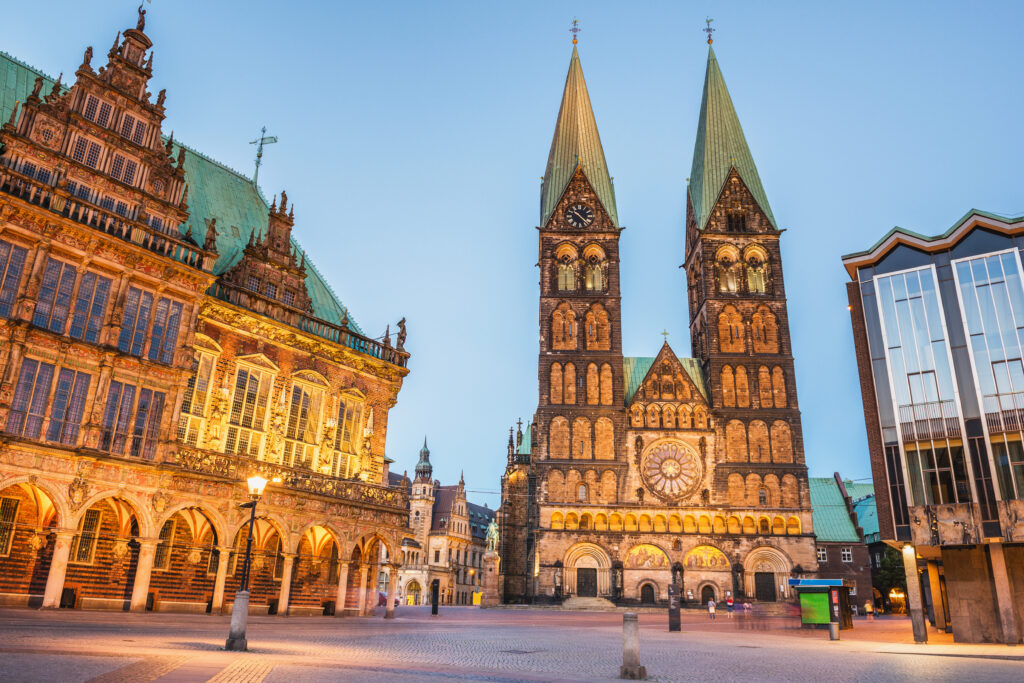
Bremen is a metropolis that manages to reconcile grandeur with the tranquility of a small town. The city itself is a page in history, adorned with splendid monuments. With its fascinating museums, green spaces surrounded by parks, cruises along the river Weser, friendly bars and restaurants, Bremen offers a very pleasant living environment. For visitors, the majestic historic Am Markt square, emblematic of the city's past power, is a must-see, as is the picturesque Schnoor district of charming fishermen's cottages. The Viertel, also known as the "Quarter", boasts fine homes dating from the 19th and early 20th centuries, as well as an abundance of restaurants, cafés and boutiques. Bremen also boasts a wealth of museums. The student district of Ostertor is the place to be for nightlife. Just 60 km from the North Sea, Bremen is perhaps the most pleasant of Germany's northern cities.
17. German gastronomy
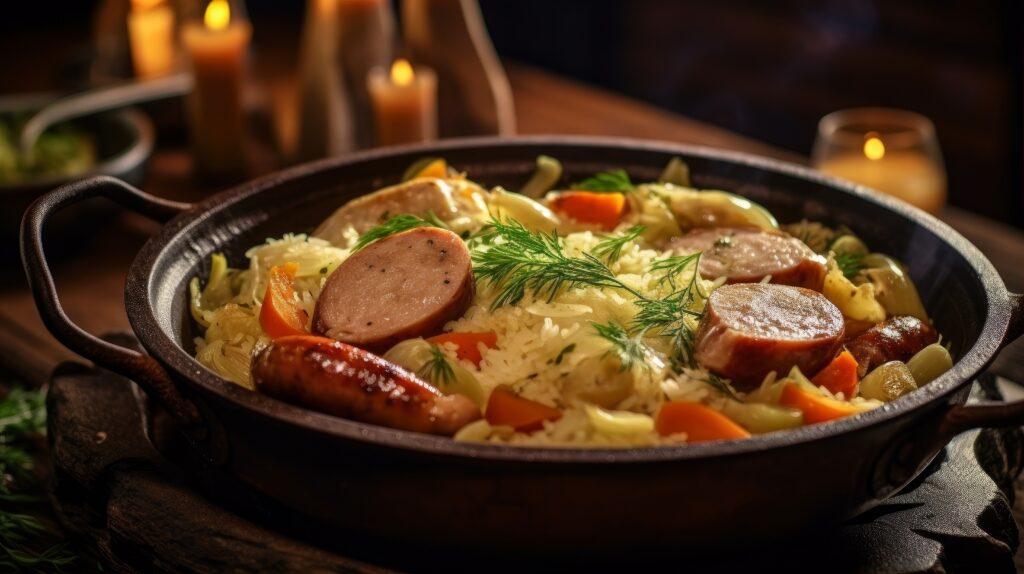
Traditional German gastronomy is frank and generous, often tasty even if not necessarily dietetic. Dishes in sauce are legion, often pork-based, and accompanied by potatoes or cabbage/sauerkraut. Germany's terroir is rich: each region has its own culinary specialties, which can be found in every Kneipe or traditional restaurant. Virtually every city has its own beer(s), and many regions, especially in the west and south, are wine-growing areas, producing delicious wines, especially white ones. A trip through Germany's gastronomic scene is sure to keep you from getting bored... But today's urban Germany is hedonistic, cosmopolitan and open to the world. Ethnic cuisine is widespread and often of the highest quality, starting with the famous kebab.
Where to go for a romantic break in Germany?
There are plenty of romantic places to take a romantic stroll across the Rhine. The Black Forest, a skier's paradise in winter and a hiker's paradise in summer, with its old towns, lakes and picturesque landscapes, is ideal for long couples' getaways. Lake Constance , with its dozen green islets, also offers its share of exceptional scenery. Castles such as Neuschwanstein, the inspiration for Walt Disney's Sleeping Beauty, and Heidelberg are a must for couples. The surrounding villages are also full of fine restaurants where you can enjoy a candlelit dinner, particularly on the "romantic route" from Würzburg to Füssen. Finally, there's the island of Rügen, at the heart of German romantic culture.
What to do in Germany near Strasbourg?
Once you've enjoyed our 15 must-sees in Strasbourg, it's only a few kilometers to Germany. You'll need to visit the green and contemporary Karlsruhe , enjoy the attractions of Europa Park, discover Freiburg or Offenburg, take an excursion to the edge of the Black Forest... Strasbourg is the perfect opportunity to venture across the Rhine!
Visiting Germany as a family: what to do?
There's plenty to do in Germany's major cities with the whole family . In Munich, take in a Bayern Munich match, visit the Hellabrun zoo, stroll through the Englischer Garten, see the Toy Museum... In Berlin, you can visit the zoo or Tierpark to see the animals, the Museum of Natural History, the Spy Museum, the Video Game Museum, Legoland... But in the rest of the country, you'll also have to visit castles like Neuschwanstein, which inspired Walt Disney's Sleeping Beauty, and enjoy the incredible German countryside with your family. Germany is also covered in forests and pleasant landscapes, from the Bavarian Alps to the Baltic coast and a vast array of low mountain ranges. Hiking in Upper Bavaria, in the Taunus, in Saxon Switzerland, on the famous Rennsteig in Thuringia, in the Eifel and, of course, in the Black Forest - there's something for the whole family!


